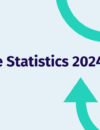
Even if you’re not an avid follower of football, you’d have been hard-pressed to have missed the big news for England’s Lionesses last summer.
All eyes may be on the Women’s World Cup right now, but let us not forget that for the first time in the competition’s history, the England women’s team won the UEFA European Women’s Championship last year.
Despite reaching the finals twice before, the Lionesses had never managed to scoop the coveted winning trophy – and some would say the win was worth the wait.
The Lionesses first reached the Euros final in the competition’s very first year, in a shootout against Sweden, in 1984. The game took place in front of 2,500 fans at the time – a far cry from the record crowd of over 87,000 fans who showed up to witness England’s win over Germany at Wembley Stadium last July.
The historic final attracted a cumulative viewership of over 50 million people worldwide, amounting to three times more than the 2017 final. With a number of record-breaking figures behind them, and a historic World Cup final ahead, we now ask the question – what does the future hold for the Lionesses? Have they changed the perception of women’s football for the masses?
The new interest in women’s football worldwide
Women’s football has been steadily growing in popularity over the years, with elite footballing sides around the world taking on more and more women’s squads on a full-time basis.
2022 was a particularly pivotal year for women’s football; with record-breaking transfers and global viewing figures at an all-time high. The Lioness’ victory in the Euros seems to have sparked an increased interest in the sport – with almost two-thirds of football fans stating that they’re more interested in following women’s football in future.
Previously, there had been an opinion among fans that the women’s game was ‘less exciting’ to watch than the men’s, but last year’s Euros tournament has helped to shift perceptions of the game. A survey by Ipsos, a global market research firm, found that the women’s game is said to come with a “less tribal and aggressive atmosphere”, and has been praised for having a more inclusive nature, with one survey respondent saying the Euros tournament was “more for everyone” and “less of a boys club”.
With such a significant growth of interest in so many regions of the market since last year – the UK, Germany, and Australia, to name a few – and with the FIFA Women’s World Cup unfolding at this very moment, the real question we have to ask now is whether this new-found interest in the women’s sport will bring about any tangible, meaningful change.
So – what’s the impact?
A change in attitude isn’t always particularly easy to quantify or measure, but the impact of the Lionesses’ win has been undeniable.
Between June 2022 – shortly before the women’s Euros kicked off – and December 2022, there was a 15% increase in female youth teams and a 9% increase in female-registered football teams in the UK.
Add this to more than 416,000 new opportunities to play, coach, officiate and volunteer across schools and clubs in the tournament’s nine host cities, it’s safe to say that things are looking up for the women’s game.
The Lionesses’ victory also appears to have driven major momentum into the ‘Let Girls Play’ campaign. Launched by the FA in 2021, Let Girls Play is an initiative designed to inspire and empower communities and schools to provide better opportunities for girls to play football.
The campaign’s annual event, held on International Women’s Day, invites girls up and down the country to take part in the ‘Biggest Ever Football Session’. This year, a record-breaking 285,000 girls took part – a threefold increase in participation compared to 2022.
According to an article by England Football, there’s also been a 196% increase in women’s and girls’ football session bookings through the England Football ‘FindFootball’ tool – so if there were any doubts about whether or not girls are interested in playing football, those can quickly be cast aside.
Womens’ football in the media
In addition to the new sporting opportunities we’re seeing for girls in the UK, we’re also seeing a number of new opportunities for the women’s game off the pitch.
This year has seen an unprecedented level of representation in the media, in ways we’ve never seen before. For decades now, we’ve been accustomed to seeing men’s football in the media – whether it’s simply just promoting upcoming games, showcasing brand sponsorships with players, or sharing campaigns and messages of support from the likes of Coca-Cola, KFC, Adidas, Nike, Hyundai, Budweiser and TalkSport ahead of large sporting events such as the mens’ World Cup. It’s safe to say that we’ve never seen the women’s game receive the same level of attention – until now.
This year, we’ve seen pubs advertising and screening the games. We’re seeing the women’s game being put on TVs in offices during the work day. Just last week, a viral video was shared of a women’s World Cup game being shown live during a flight, and, on top of that, huge brands are getting behind the cause too. From EE and M&S logos appearing on the Lionesses’ training kit, to Google’s World Cup TV ad, to multi-channel campaigns from Weetabix and Sure Deodorant – the hype around the England women is at an all-time high, and this has opened up an entirely new runway of opportunity for women’s sport that we’ve never seen before.
The shaping of the future
One of the most impactful things the Euros has accomplished for women’s football has been to encourage better research around the female kit.
After the Euros ended, a study was launched to see whether elements of a football kit, such as boots and balls, could be developed to prevent injury to female players.
England’s captain, Leah Williamson, has contributed to a report, published in Sports Engineering, which looks at the lack of progress made in developing technology specifically for women’s football. The report essentially argues that the safety and performance of female football players is suffering, because their kit is still mostly designed for the men’s game.
The author of the report, Dr Katrine Okholm, has pointed out that women’s feet differ from men’s in shape and volume, which causes a risk of injury from ill-fitting boots. When boots aren’t designed correctly around the shape of the foot, there’s a far higher risk of ACL injury, stress fractures, foot deformation, and blisters.
There are also crucial considerations to be made around sports bras and shorts in particular; with concerns around the colour of women’s shorts and the challenges this poses for menstruating women, and how sports bras are largely developed for runners and not footballers. Over 40% of elite female athletes have reported breast pain, with many of them opting to wear two bras. Needless to say, the lack of research into female-adjusted kits has a tangible and detrimental impact on women who are simply trying to do their jobs.
The report concluded that: “To overcome these challenges, more products based on an enhanced understanding of women’s specific needs are required to optimise performance, safety, and the overall experience for women’s footballers.”
The good news, however, is that while research is far further behind than it should be, it’s now finally moving in the right direction.
Shortly before the Women’s World Cup kicked off, Nike launched a new boot – known as the Phantom Luna Boot – which has been described as the “most innovative and researched women’s-led boot” in the company’s history.
Nike says the boot is their “most meaningful investment in women yet”, and is made up of “three key elements: traction, fit and feel – all of which were designed with female-specific feedback, needs and anatomy in mind”.
Key features of the boot include a tighter fit around the ankle and a new circular stud pattern near the toes to help with traction and mobility, providing “bigger touch zones” because of the smaller size of women’s feet.
Further to this, the European Club Association (ECA) has also recently announced that it has commissioned a ‘groundbreaking’ study to highlight the benefits of well-designed footwear, with over 350 players having taken part to date.
The study has officially completed its first phase of research, with phase two of the project now underway. The ECA has said that they hope their findings will “ultimately be for the greater good and tailored boots will eventually be worn by every girl who plays the game.”
While there’s still a long way to go, there’s been enormous strides made towards fairer opportunities for women in sport since the Lionesses scooped the winning trophy at the Euros last year. From humble primary school pitches to famous faces on the big screen, the impact has been felt by everyone – and with the historic World Cup final ahead of us, it feels like the best is yet to come.
At Druthers, it’s our mission and our passion to empower organisations to find the best person to make an impact on their work, from a diverse shortlist of remarkable talent. Get in touch with us to find out how your business can make a positive change to your hiring and retention processes.





